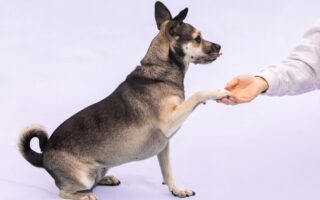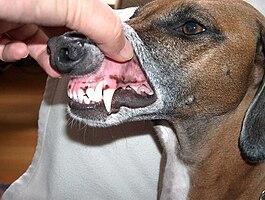In a world where dogs have become cherished members of the family, the quest for effective training methods has never been more critical. Enter Cesar Millan, the charismatic dog behaviorist whose unique approach to canine training has captured the attention of pet owners around the globe. Known as the “Dog Whisperer,” Millan blends understanding, discipline, and a touch of intuition to create a harmonious relationship between humans and their furry companions. This article delves into the principles and techniques of Cesar Millan’s training philosophy, exploring how his methods can transform not just behavior, but the very bond between dogs and their owners. Whether you’re a seasoned dog trainer or a first-time pet parent, discover how Millan’s insights can help you cultivate a well-behaved, balanced canine companion.
Table of Contents
- Understanding the Canine Mind: The Foundation of Cesar Millans Training Philosophy
- Practical Techniques for Building a Strong Owner-Dog Relationship
- Addressing Behavioral Issues: Cesars Approach to Common Problems
- Enhancing Socialization Skills: Strategies for Raising a Well-Adjusted Dog
- Q&A
- In Retrospect
Understanding the Canine Mind: The Foundation of Cesar Millans Training Philosophy
At the core of Cesar Millan’s training philosophy lies a profound understanding of the canine mind, emphasizing the emotional and behavioral dynamics between humans and dogs. Millan asserts that dogs are guided by their instincts; therefore, recognizing their natural behaviors is critical for effective training. His approach encourages pet owners to become calm-assertive leaders, which helps establish a clear structure and promotes a harmonious relationship. Key elements of his philosophy include:
- Energy Awareness: Understanding and managing your energy to convey authority.
- Pack Mentality: Recognizing the social orders within the dog world and how it relates to your pet’s behavior.
- Exercise: Ensuring dogs receive adequate physical activity to maintain mental balance.
- Discipline: Setting boundaries and rules that are consistently reinforced.
- Affection: Integrating love and affection as a reward for good behavior.
The concept of “energy” is particularly significant in Millan’s methodology, as he believes that dogs are highly attuned to the emotional states of their owners. This connection is what makes it possible to guide a dog towards better behavior through positive reinforcement and structured discipline. Instead of focusing on verbal commands alone, Millan’s techniques advocate for a deeper bond based on mutual respect and understanding. To illustrate this, consider the following table highlighting the contrast between traditional dog training and Millan’s approach:
| Aspect | Traditional Training | Cesar Millan’s Approach |
|---|---|---|
| Focus | Obedience commands | Energy and leadership |
| Method | Punishment-based | Positive reinforcement |
| Owner’s Role | Trainer | Calm-assertive leader |
| Goals | Immediate obedience | Long-term understanding |
Practical Techniques for Building a Strong Owner-Dog Relationship
Strengthening the bond between you and your dog is a rewarding journey that requires patience, consistency, and communication. One of the most effective techniques is establishing clear rules, boundaries, and limitations right from the start. This sets a framework within which your dog understands expectations and feels secure. Engaging in regular training sessions can reinforce these concepts while enhancing your dog’s focus and obedience. Incorporate playful elements during training to maintain motivation and engagement. Consider the following strategies:
- Regular Exercise: Physical activity is essential for a dog’s mental and emotional health.
- Positive Reinforcement: Reward good behavior with treats, praises, or playtime to encourage repetition.
- Quality Time: Spend time together through daily walks, games, or simply relaxing at home.
Additionally, understanding your dog’s body language can significantly enhance communication. Familiarize yourself with signs of stress, comfort, or excitement that can indicate their feelings. This mutual understanding not only fosters trust but also allows for deeper connections between you and your pet. A consistent routine can also signify stability for your dog, helping them feel grounded in their environment. Here’s how to implement a daily routine:
| Time | Activity |
|---|---|
| 7:00 AM | Morning walk |
| 8:00 AM | Feeding |
| 12:00 PM | Playtime |
| 6:00 PM | Evening walk |
Addressing Behavioral Issues: Cesars Approach to Common Problems
Cesar Millan’s approach to addressing behavioral problems in dogs is rooted in the understanding of canine psychology and the importance of energy. He emphasizes the calm-assertive energy that a dog owner should embody. This type of energy can significantly influence how a dog behaves, making it crucial for owners to maintain a balanced demeanor. Millan advocates for consistency and routine, asserting that dogs thrive in structured environments. His method includes techniques such as leash training and the use of positive reinforcement, which help to redirect unwanted behaviors and instill a sense of discipline.
Common issues such as aggression, excessive barking, and separation anxiety can often be resolved using Millan’s techniques. He recommends a proactive approach involving the following strategies:
- Exercise: Regular physical activity helps expend excess energy that could lead to problem behaviors.
- Discipline: Establishing rules and boundaries gives dogs clear guidelines.
- Affection: After exercise and discipline, providing affection reinforces positive behavior.
According to Millan, addressing these issues effectively requires an understanding of the underlying stressors that influence a dog’s behavior. The integration of his structured approach can bring about significant transformation not only in the dog but also in the relationship between the owner and their furry companion.
Enhancing Socialization Skills: Strategies for Raising a Well-Adjusted Dog
To cultivate an environment that encourages positive interactions, it’s crucial to expose your dog to a variety of social situations early on. Here are some strategies to implement:
- Controlled Introductions: Begin with calm environments where your dog can meet other pets and people.
- Puppy Classes: Enroll in classes that not only teach obedience but also promote social skills through guided interactions.
- Regular Outings: Take your dog on walks in bustling areas—this helps them get accustomed to noise and varied stimuli.
- Playdates: Organize playdates with other well-adjusted dogs to allow for natural play and bonding.
Incorporating training techniques that focus on engagement and communication can also enhance your dog’s social behavior. Consider the following methods:
| Techniques | Benefits |
|---|---|
| Positive Reinforcement | Encourages good behavior and builds confidence. |
| Desensitization | Helps dogs become accustomed to fearful stimuli gradually. |
| Socialization Games | Makes learning fun and interactive while promoting teamwork. |
Q&A
Q&A on Cesar Millan Training: Understanding His Techniques
Q1: Who is Cesar Millan and what is his training philosophy?
A1: Cesar Millan, known as the “Dog Whisperer,” is a renowned dog behaviorist and television personality. His training philosophy centers around the principles of energy, balance, and understanding canine psychology. Millan emphasizes the importance of establishing a leadership role and using calm, assertive energy to communicate effectively with dogs.
Q2: What are the core techniques used by Cesar Millan in his dog training?
A2: Millan’s techniques include establishing a clear pack hierarchy, using leash training to guide behavior, and employing positive reinforcement alongside corrective measures. Techniques such as “exercise, discipline, and affection” create a structured environment that allows dogs to thrive. He also focuses on the dog owner’s energy and body language as critical components in training.
Q3: How does Cesar Millan address behavioral issues in dogs?
A3: Millan approaches behavioral issues by identifying the root cause of the problem rather than the symptoms. He uses a combination of exercises, socialization, and behavioral modification techniques to help dogs overcome fears, aggression, or anxiety. His focus is on creating a calm and assertive environment to encourage better behavior.
Q4: Are Cesar Millan’s methods scientifically backed?
A4: While many of Millan’s methods are popular among dog owners, his techniques have faced criticism from some animal behaviorists who argue that they lack scientific support. Critics often advocate for purely positive reinforcement techniques, while supporters claim that Millan’s approach can lead to effective results when applied correctly. It’s essential for dog owners to research and find what aligns best with their beliefs and their dog’s needs.
Q5: Can Cesar Millan’s training techniques be applied to all dog breeds?
A5: Yes, Cesar Millan’s principles can generally be applied to all dog breeds, though individual temperament and background must be considered. Some dogs may respond better to certain techniques than others, so flexibility and adaptation are key. Millan often emphasizes the importance of understanding a dog’s unique personality to tailor the training approach accordingly.
Q6: How can dog owners get started with Cesar Millan’s training methods?
A6: Dog owners can start by observing their own energy and how it affects their dog’s behavior. Millan advises engaging in daily exercise with dogs, practicing consistent commands, and maintaining a calm and assertive demeanor. There are also numerous resources available, including books, online videos, and workshops, where owners can learn more about his methods in detail.
Q7: What should dog owners be cautious about when following Millan’s techniques?
A7: While many find success with Millan’s methods, dog owners should be cautious not to misinterpret the concepts of dominance and submission, which can lead to harmful practices. It’s important to approach training with empathy and understanding, avoiding any form of intimidation or aggression. Thus, a well-rounded approach using knowledge from multiple training philosophies can often yield the best results.
Q8: What are some success stories related to Cesar Millan training?
A8: Numerous dog owners have reported positive transformations in their pets after following Millan’s training methods. From aggressive dogs becoming more sociable to anxious ones overcoming their fears, the success stories often highlight the importance of consistency, leadership, and understanding the dog’s perspective. These anecdotes serve as testimonials to the effectiveness of his approach for both dogs and owners alike.
Q9: Where can I find more information on Cesar Millan’s training practices?
A9: More information on Cesar Millan’s training practices can be found on his official website, through his television series “Dog Whisperer,” and in his bestselling books. Additionally, Millan’s social media platforms and YouTube channel offer various tips, training videos, and personal insights into his methodology, making it accessible for dog owners seeking guidance.
In Retrospect
Cesar Millan’s training philosophy serves as a testament to the power of understanding and respecting the natural instincts of our canine companions. By emphasizing leadership, discipline, and affection, Millan encourages dog owners to forge deeper connections with their pets, resulting in more harmonious relationships. Whether you’re a seasoned pet owner or just beginning your journey, the principles of Cesar Millan’s approach to dog training offer valuable insights into the world of canine behavior. As you embark on this rewarding path, remember that patience, consistency, and empathy are key ingredients in nurturing a well-rounded and balanced dog. So, take a moment to reflect on the insights you’ve gained, and let them guide you as you strive to create a tranquil and fulfilling environment for both you and your furry friend. The journey ahead is not just about training; it’s about understanding, growing, and celebrating the unique bond that exists between humans and dogs.



